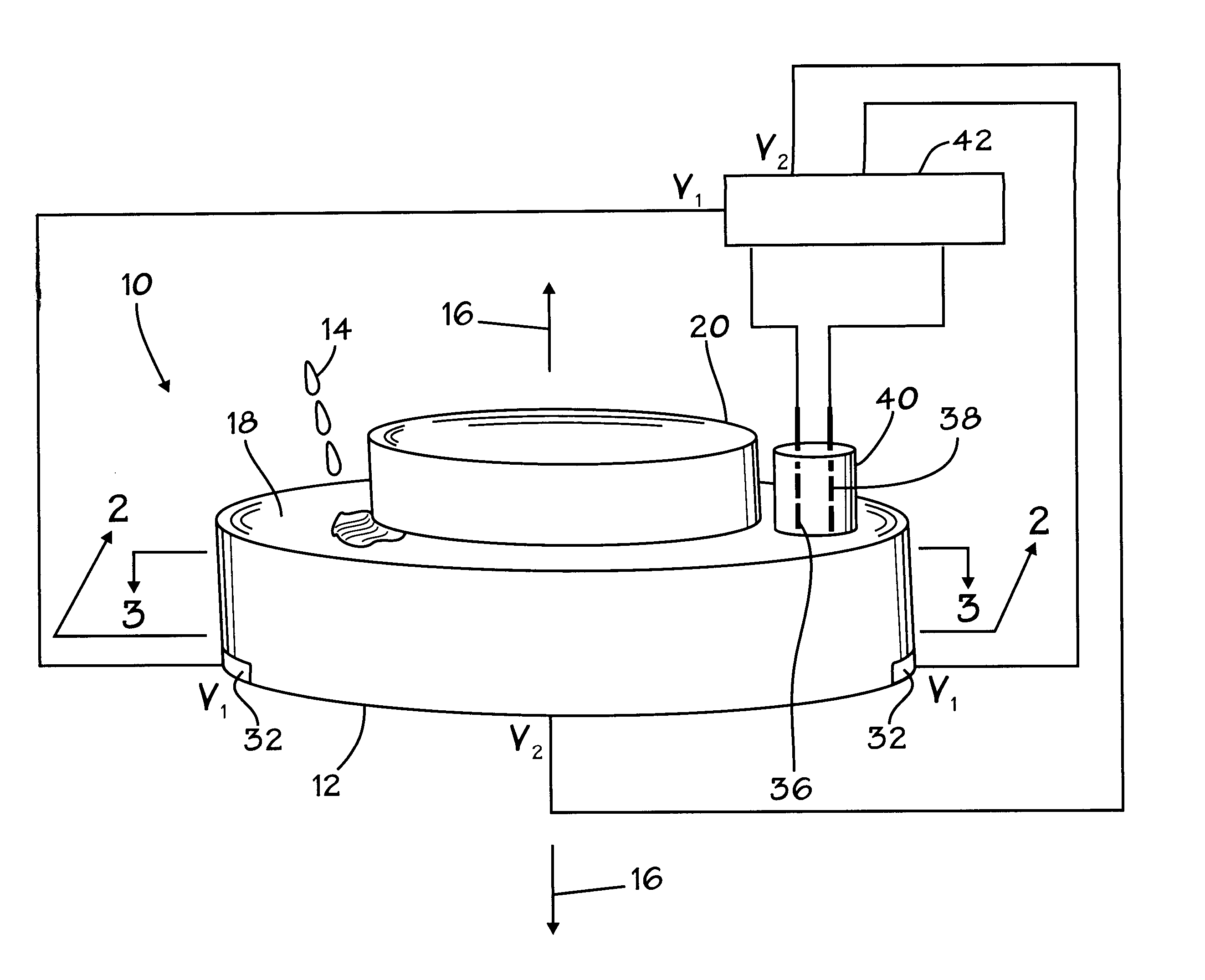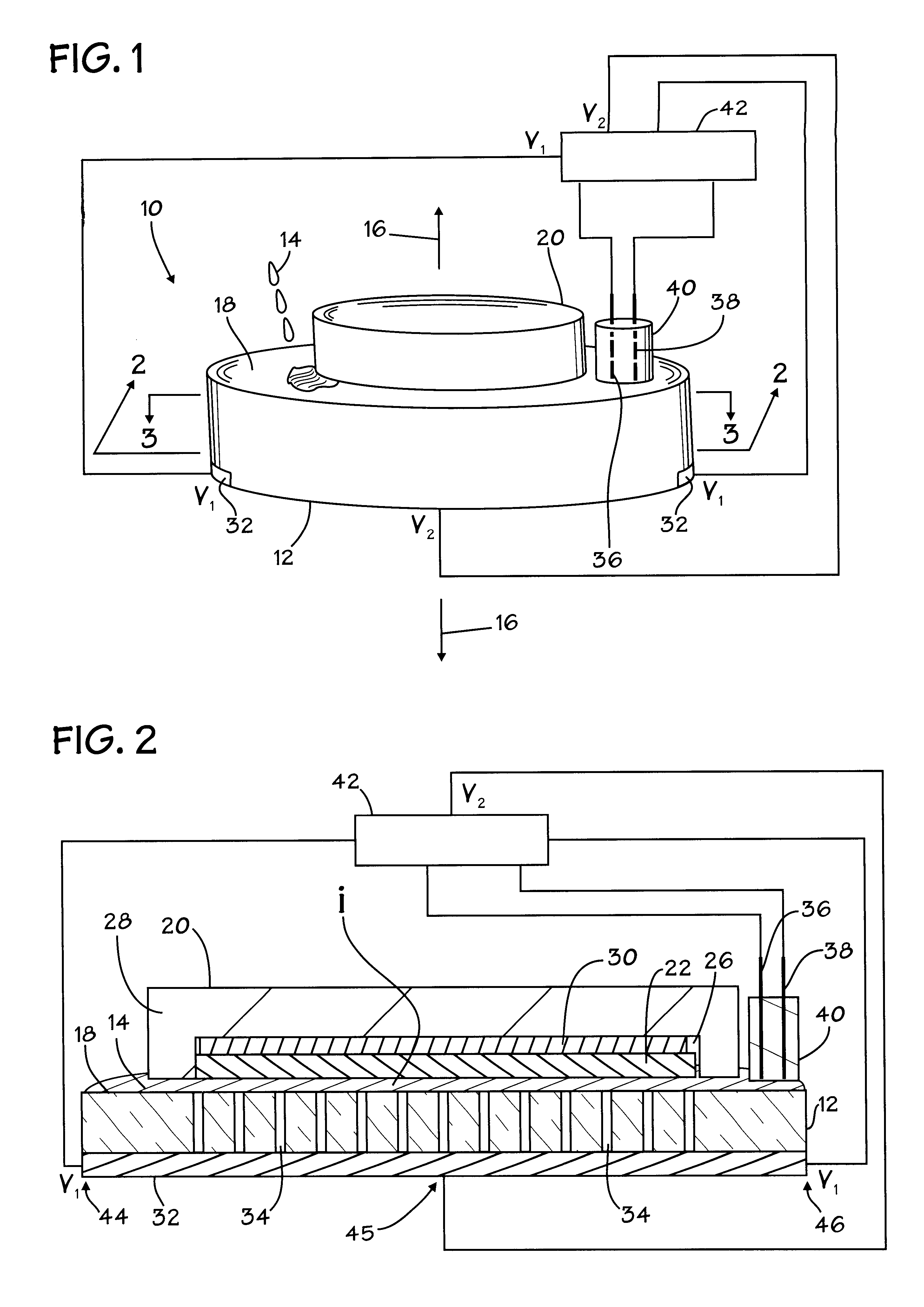Electrochemically generated reactants for chemical mechanical planarization
a technology of reactants and reactants, applied in the field of electrochemically generated reactants for chemical mechanical planarization, can solve the problems of increasing the overall cost of the cmp process, oxidizing the organic and metallic components of the cmp tool, and little that may be done on a more local scal
- Summary
- Abstract
- Description
- Claims
- Application Information
AI Technical Summary
Problems solved by technology
Method used
Image
Examples
Embodiment Construction
In the drawings described below, reference numerals are generally repeated where identical elements appear in more than one figure. Turning now to the drawings, and in particular to FIG. 1, therein is shown a pictorial view of an exemplary embodiment of a chemical mechanical polishing system 10 (hereinafter CMP system 10) that utilizes electrochemistry for generation of chemical species useful in CMP in accordance with the present invention. For better understanding, FIG. 1 should be viewed in conjunction with FIG. 2, which is a cross-sectional view of FIG. 1 taken at section 2--2. The CMP system 10 includes a member or table 12 that is operable to receive a quantity of an electrically conducting solution 14 dispensed from a reservoir or other dispensing system (not shown). The table 12 maybe motorized and therefore operable to rotate about an axis 16. An upper surface 18 of the table 12 functions as a polish pad surface and will typically be composed of a compliant material such as...
PUM
| Property | Measurement | Unit |
|---|---|---|
| electrochemical potential | aaaaa | aaaaa |
| centrifugal force | aaaaa | aaaaa |
| period of time | aaaaa | aaaaa |
Abstract
Description
Claims
Application Information
 Login to View More
Login to View More - R&D
- Intellectual Property
- Life Sciences
- Materials
- Tech Scout
- Unparalleled Data Quality
- Higher Quality Content
- 60% Fewer Hallucinations
Browse by: Latest US Patents, China's latest patents, Technical Efficacy Thesaurus, Application Domain, Technology Topic, Popular Technical Reports.
© 2025 PatSnap. All rights reserved.Legal|Privacy policy|Modern Slavery Act Transparency Statement|Sitemap|About US| Contact US: help@patsnap.com



